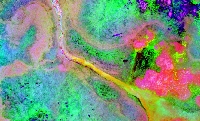The seminar "GHG emissions assessment in agriculture, forestry and other land uses", organised by the Institute for Environmental Solutions, has ended.
During the seminar we explored existing methods for monitoring greenhouse gases in agriculture, forestry and other land uses, and the potential of Earth observation data to support these methods. Speakers included researchers and monitoring specialists, as well as representatives from the Copernicus program and the European Commission.
A video recording of the workshop is available here: GHG assessment in agriculture, forestry and other land use (to watch a specific performance, use the time stamps indicated in the video description)
Program:
Introduction
Inese Suija-Markova, Executive Director, Institute for Environmental Solutions
“Revision of the Land Use, Land Use Change and Forestry (LULUCF) Regulation: Overview and implications for monitoring.”
Dr. Rene Colditz, Official from directorate-general Climate Action Europe
“National GHG inventories: accounting in forest land, cropland and grassland. Challenges and solutions.”
Dr. Andis Lazdiņš Senior Researcher, Latvian State Forest Research Institute "Silava"
“The field measurements and results of GHG emissions from agricultural lands in Latvia.”
Dr. Ainis Lagzdiņš, Senior Researcher, Latvia University of Agriculture
“In situ GHG measurements in agricultural lands: advances and challenges.”
Aigars Lavrinovičs, Researcher, Institute for Environmental Solutions
“Use of the CAMS CO2 flux estimates to estimate the net AFOLU exchange over time on a country scale.”
Dr. Frédéric Chevallier, Senior Researcher, LSCE
“Developing Earth observation support for monitoring and reporting of GHG emissions and removals from land use, land-use change and forestry (LULUCF).”
Dr. Ali Nadir Arslan, Senior Researcher, Finnish Meteorological Institute
“Copernicus satellite data use to support GHG monitoring: a Latvian case study.”
Dr. Dainis Jakovels, Senior Researcher, Institute for Environmental Solutions
